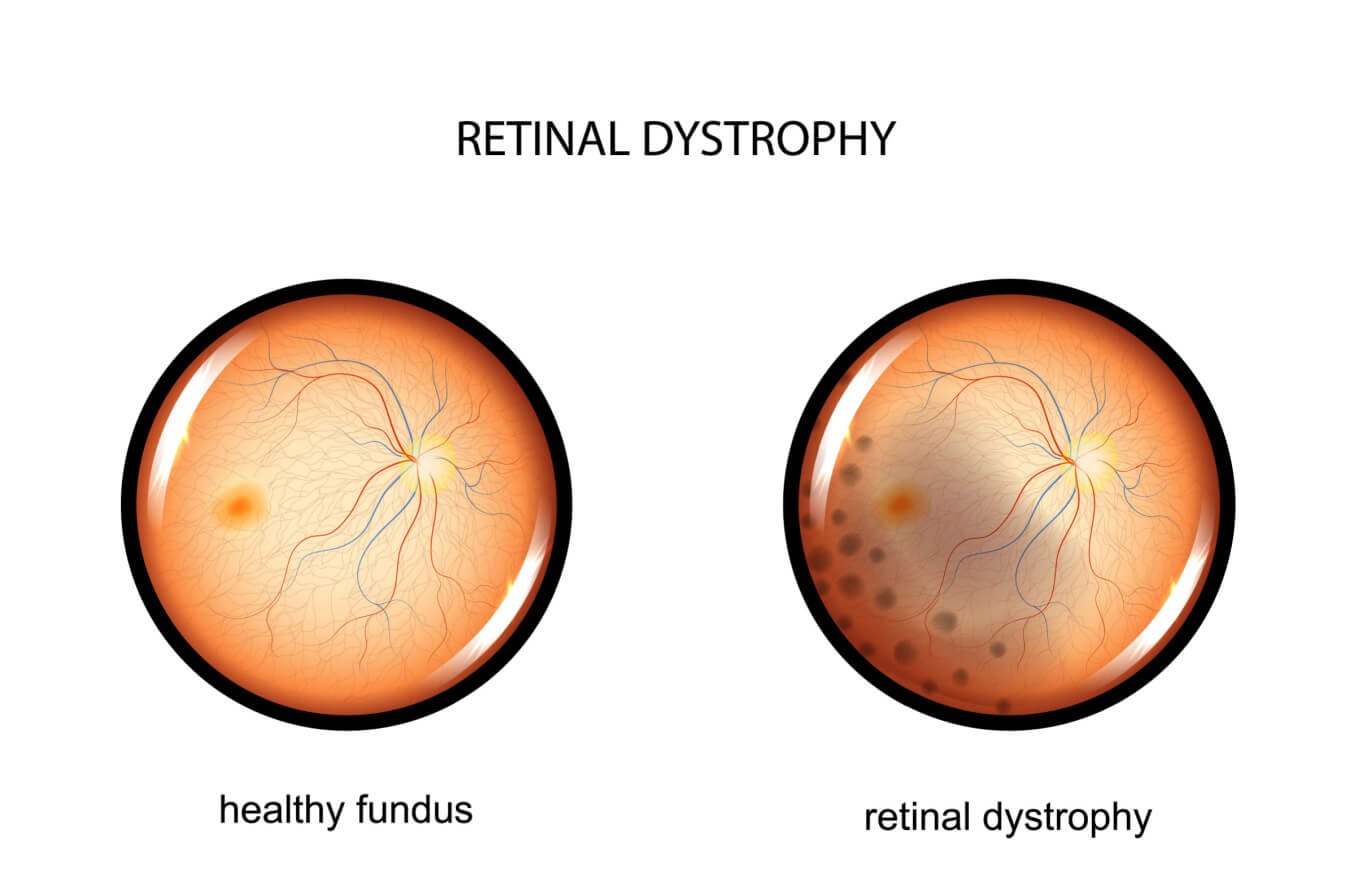Retinal dystrophy affects over 2 million people worldwide. This condition leads to progressive vision loss, impacting the lives of individuals and their families. Understanding retinal dystrophy management is crucial to preserve vision and improve the quality of life for those affected
What Is Retinal Dystrophy?
Retinal dystrophy is a condition causing gradual degeneration of the retina’s photoreceptor cells, impairing vision and potentially leading to blindness. It’s crucial to grasp the complexity of this condition for effective management.
Types of Retinal Dystrophy
There are several types of retinal dystrophy, each with unique characteristics and inheritance patterns.
1. Retinitis Pigmentosa (RP)
Retinitis pigmentosa is the most prevalent form of retinal dystrophy. It is characterized by the gradual degeneration of rod photoreceptor cells in the retina of the eye, leading to night blindness and tunnel vision.
2. Stargardt Disease
Stargardt disease is a macular dystrophy primarily affecting central vision in the retina of the eye. Mutations in the ABCA4 gene cause it and are often diagnosed in childhood or adolescence. Individuals with Stargardt disease may experience blurred images, difficulty reading, and impaired colour perception.
3. Leber Congenital Amaurosis (LCA)
LCA is a severe form of retinal dystrophy characterized by profound vision loss or blindness from birth.
4. Usher Syndrome
Usher syndrome is a rare genetic disorder that combines retinitis pigmentosa with hearing loss
5. Rod-Cone Dystrophy
This condition affects cone cells first in the retina of the eye, leading to a loss of colour perception and central vision. As the condition progresses, it may also impact rod cells, further reducing peripheral and night vision.
6. Bardet-Biedl Syndrome (BBS)
Bardet-Biedl syndrome is a rare disorder that affects multiple systems in the body, including the retina. It can lead to retinal degeneration, vision loss, and other health issues such as obesity and kidney problems..
7. Refsum Disease
Refsum disease is a metabolic disorder resulting in the body’s accumulation of phytanic acid. This excess buildup can lead to retinal dystrophy, causing vision problems and balance issues.
Symptoms of Retinal Dystrophy
The symptoms of retinal dystrophy may vary depending on the type and stage of the condition. Common symptoms include:
- Night blindness
- Decreased peripheral vision
- Difficulty seeing in dim light
- Impaired colour vision
- Photophobia (sensitivity to light)
- Blurred or distorted vision
- Vision loss, which may progress to legal blindness
Early Detection Matters
Timely detection of retinal dystrophy can significantly impact disease progression. Early detection involves:
- Regular eye examinations by a qualified ophthalmologist.
- Utilising advanced imaging techniques like OCT and ERG to confirm the diagnosis.
- Monitoring visual changes and symptoms, such as night blindness and peripheral vision loss.
Medical Interventions for Retinal Dystrophy
While a cure for Retinal dystrophy remains elusive, various medical interventions aim to slow disease progression and preserve existing vision. Some of the medical options include:
- Intravitreal injections: Administering medications directly into the eye can help slow down the degeneration of the retina’s cells.
- Retinal prostheses: These artificial implants stimulate the retina’s remaining cells to restore vision partially.
- Gene therapies: Cutting-edge treatments target specific genetic mutations responsible for the condition, potentially halting or slowing disease progression.
Lifestyle Modifications for Better Vision
Specific lifestyle changes can help individuals with retinal dystrophy maintain their remaining vision and adapt to daily life. These include the following:
- Optimizing lighting at home and reducing glare to enhance visibility.
- Using visual aids and assistive devices, such as magnifiers and screen readers, to aid daily tasks.
- Engaging in low-impact exercises to promote overall health and well-being.
Vision Rehabilitation Services
Vision rehabilitation programs offer comprehensive support to individuals with visual impairments, including those with Retinal Dystrophy. These services typically include:
- Orientation and mobility training: Training individuals to safely navigate their environment and develop spatial awareness.
- Occupational therapy: Developing adaptive strategies and skills to perform daily tasks and maintain independence.
- Counselling services: Providing emotional support and coping mechanisms to address the emotional impact of vision loss.

